Conway, Caernarvonshire
Up to 1834
No information.
After 1834
The Conway Poor Law Union was formed on 11 April, 1837. [Although the Welsh spelling 'Conwy' is now standard, the anglicised form of "Conway" was then the norm.] The union's operation was overseen by an elected Board of Guardians, 15 in number, representing its 15 constituent parishes as listed below (figures in brackets indicate numbers of Guardians if more than one):
Carnarvonshire:
Caerhyn, Conway, Dolygarrog, Dwygyfylchi, Eglwys Rhos, Gyffin, Llanbedr y Cennin, Llandudno, Llangelynin, Llangwstenin, Llysfaen.
Denbighshire:
Llanelian, Llansaintffraid.
Denbighshire and Carnarvonshire:
Eirias, Llandrillo yn Rhos.
The population falling within the union at the 1831 census had been 9,703 with parishes ranging in size from Dolygarrog (population 158) to Llansaintffraid (1,306). The average annual poor-rate expenditure for the period 1834-36 had been £4,209 or 8s.8d. per head of the population.
In 1838, the Poor Law Commissioners authorised an expenditure of £3,535 on a new workhouse to accommodate up to 200 inmates. However, in Conway as in many other Welsh unions, there was little enthusiasm for the new workhouse system and it was nearly twenty years before its construction actually took place.
The workhouse was erected at a site on the north side of the Bangor Road about half a mile to the north-west of the town. Its location and layout are shown on the 1900 map below.
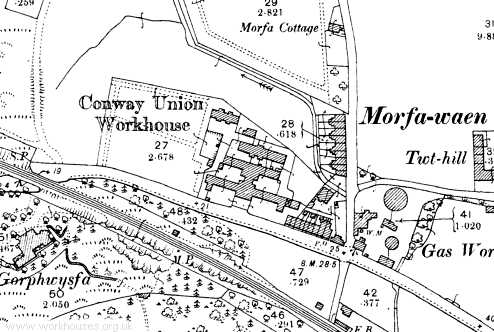
Conway workhouse site, 1900.
Construction work was hampered by the many active springs on the site and the flooding sometimes caused by high tides. The workhouse finally opened in September 1859.
The buildings consisted of a long front block, with three shorter parallel ranges to the rear. Females were housed at the west of the site and males at the east, with children on the ground floor and able-bodied adults on the first floor. The front block was set back from the road and high-walled exercise yards were created for boys and girls at the front and for men and women at the rear. The main entrance was at the centre, where the master and matron's quarters were also placed. To the rear of the centre was the inmates' dining room which also linked to the first parallel rear block. This contained the kitchen, larder, scullery, bathroom etc. To its rear stood the original infirmary with the casual ward at its eastern end. A single-storey block at the north-west of the site accommodated the aged and infirm. Major additions to the building in 1901-3 included a new dining hall at the rear of the original one, a separate laundry at the west of the site, and extensions to the male and female wards at either end of the front block. A new boardroom was subsequently added as an upper storey to the dining room.
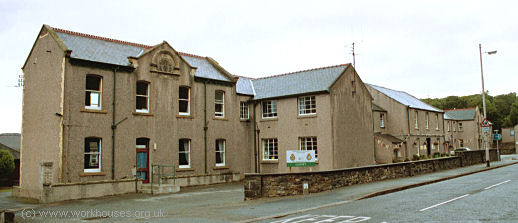
Conway workhouse from the south-west, 2000.
© Peter Higginbotham.
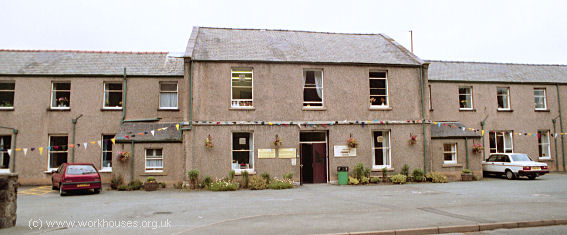
Conway workhouse entrance from the south, 2000.
© Peter Higginbotham.
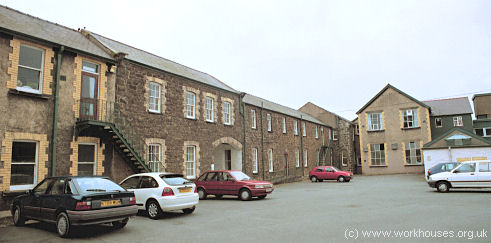
Conway workhouse men's yard from the east, 2000.
© Peter Higginbotham.
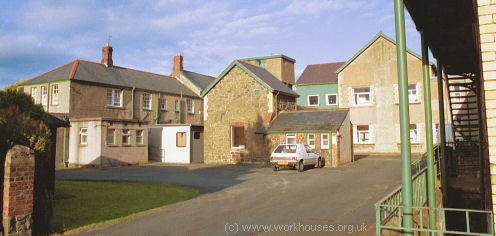
Conway workhouse female yard from the west, 2000.
© Peter Higginbotham.
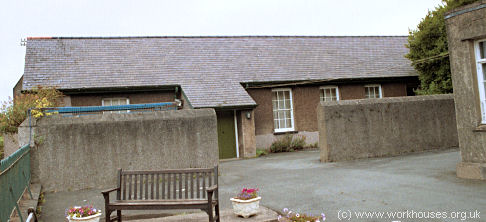
Conway workhouse rear range from the south, 2000.
© Peter Higginbotham.
In 1901, a number of additions were made to the accommodation, including an extensions at the west end of the main block, and a new separate laundry block at the west of the site.
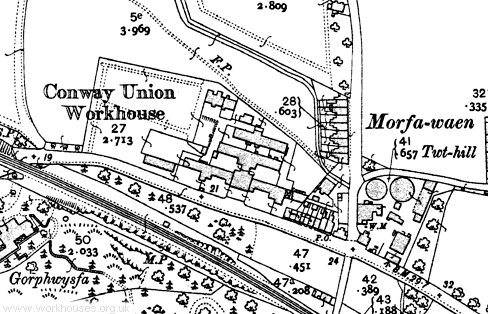
Conway workhouse site, 1913.
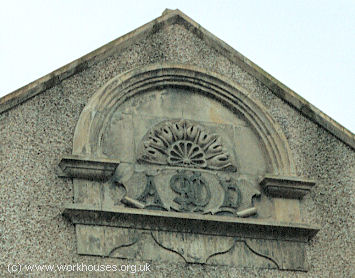
Conway workhouse date placque, 2000.
© Peter Higginbotham.
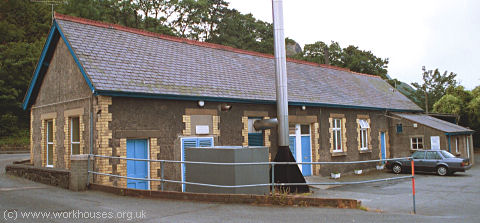
Conway workhouse laundry from the north-east, 2000.
© Peter Higginbotham.
After 1930, the workhouse site was taken over by Carnarvonshire County Council and became a Public Assistance Institution. After 1948, it joined tha National Health Service as Conway Hospital for Aged Sick. The site continued in operation as a local hospital until 2003. The buildings have now been demolished and the site redeveloped for residential use.
Children's Home
In 1909, the Conway Union established children's cottage homes in two houses 'Bryn Onen' and 'Bryn Conway' in an area known as Woodlands on Llanrwst Road just to the south of Conway.
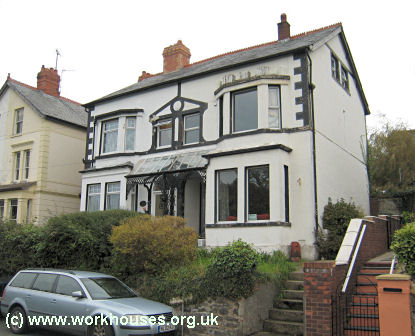
Woodlands cottage homes, 2011.
© Peter Higginbotham.
In 1926, a new children's home known as Blodwel was erected on Broad Street, Llandudno Junction.
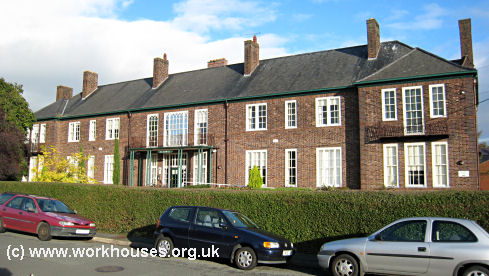
Blodwel children's home, 2011.
© Peter Higginbotham.
Staff
Inmates
Records
Note: many repositories impose a closure period of up to 100 years for records identifying individuals. Before travelling a long distance, always check that the records you want to consult will be available.
- Conwy Archive Service, Old Board School, Lloyd Street, Llandudno LL30 2YG. Holdings include: Guardians' minute books (1879-1930); Letter books (1879-1913); etc.
Bibliography
- Draper, Christopher (2005) Paupers, Bastards and Lunatics - The Story of Conwy Workhouse.
- NEW! Workhouses of Wales and the Welsh Borders. The story of the workhouse across the whole of Wales and the border counties of Cheshire, Gloucestershire, Herefordshire and Shropshire. More...
Links
- None.
Unless otherwise indicated, this page () is copyright Peter Higginbotham. Contents may not be reproduced without permission.


